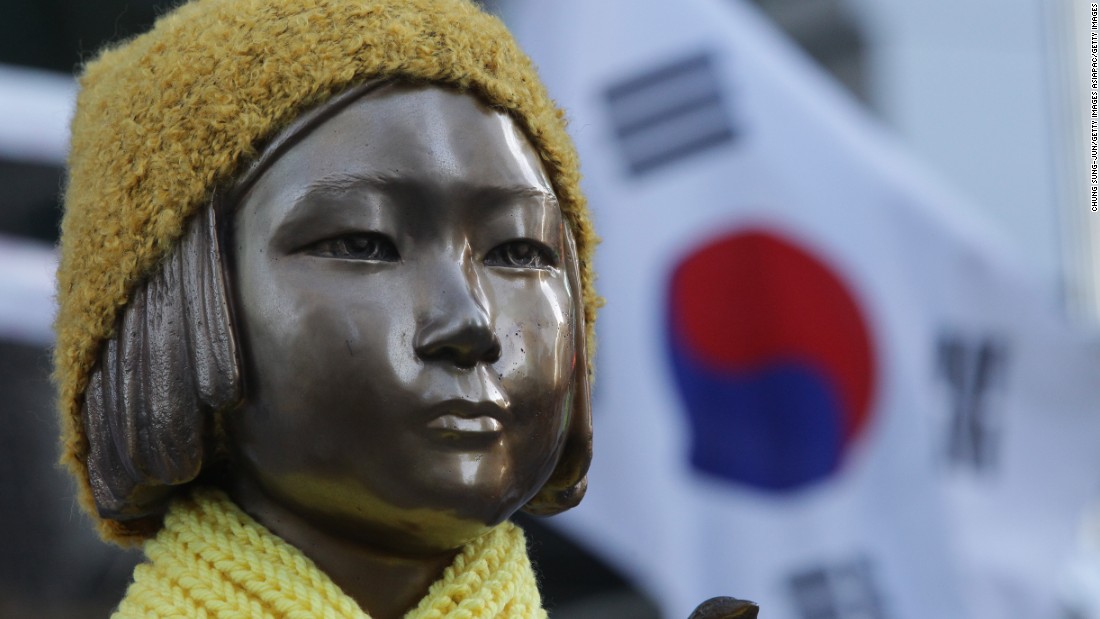 She looks impassively forward, her expression unsmiling and determined. Her feet are bare, and on her shoulder sits a small bird.
She looks impassively forward, her expression unsmiling and determined. Her feet are bare, and on her shoulder sits a small bird.
This statue has sparked international incidents, threatened trade deals, and exposed deep and bitter rifts between Japan and South Korea that go back more than seven decades.
Diplomatic spat
The first iteration of the statue was unveiled in 2011, outside Japan’s embassy in Seoul, sparking objections and demands that it be removed from the Japanese.
In January, Tokyo recalled two top diplomats from South Korea after an identical statue was erected outside the country’s consulate in Busan.
Japan also halted talks on a planned currency swap and delayed high-level economic dialogue as part of an « initial » response to the statue, chief cabinet secretary Yoshihide Suga said.
The statue was erected by a civil group in December to remember « comfort women, » women and girls forced to work as sex slaves for Japanese soldiers during World War II.
Its inspiration, artists Kim Seo-kyung and Kim Eun-sung told CNN, dates to previous Japanese criticism of a planned memorial.
Initially, they had intended to create a memorial stone for the 1000th Wednesday Demonstration — weekly protests that have been held by surviving « comfort women » outside the Japanese embassy in Seoul since 1992.
« But we heard that the Japanese government was against the memorial stone being built, and this offended us as artists, » Kim Seo-kyung said
The memorial stone plan was replaced by a « statue of peace, » the first of which was erected opposite the Seoul embassy, staring at its doors.
« If the Japanese government didn’t react so excessively, it would probably have just been a small memorial stone, » she said.
There are now dozens of the statues in Korea, and six in other countries, including the US, Canada and Australia, according to the artists.






